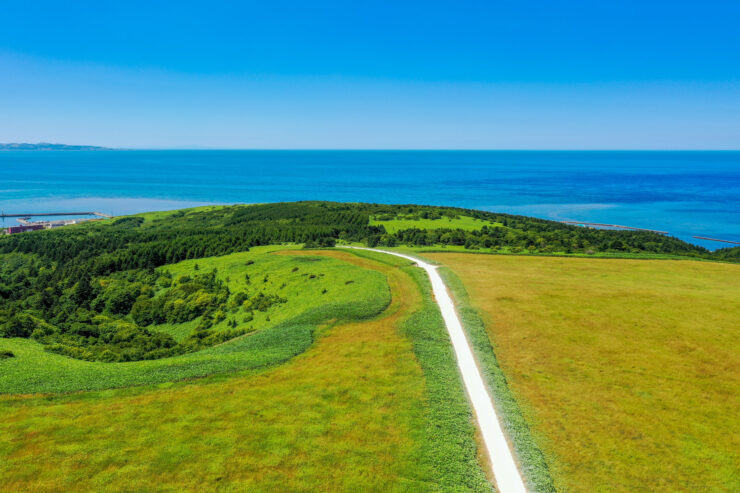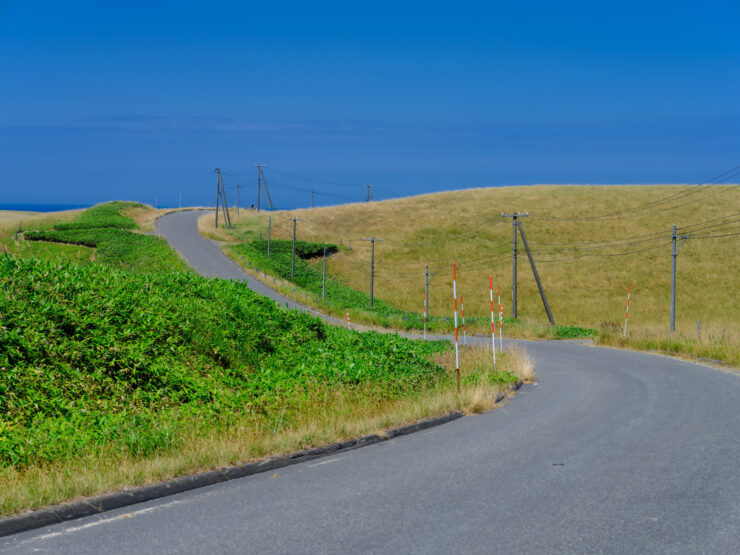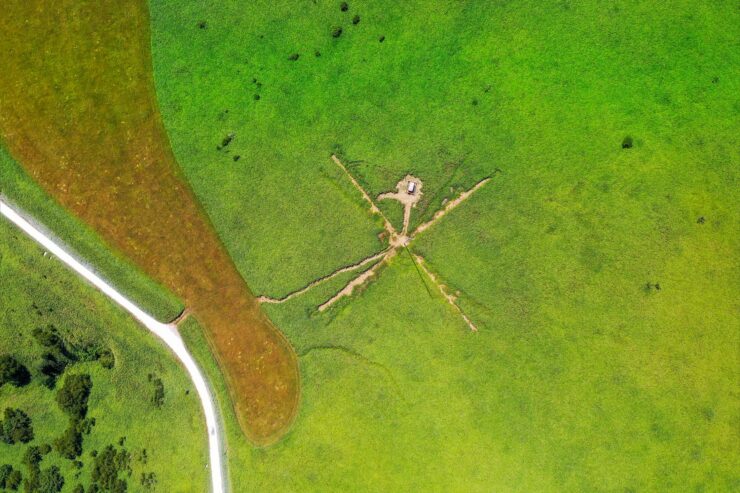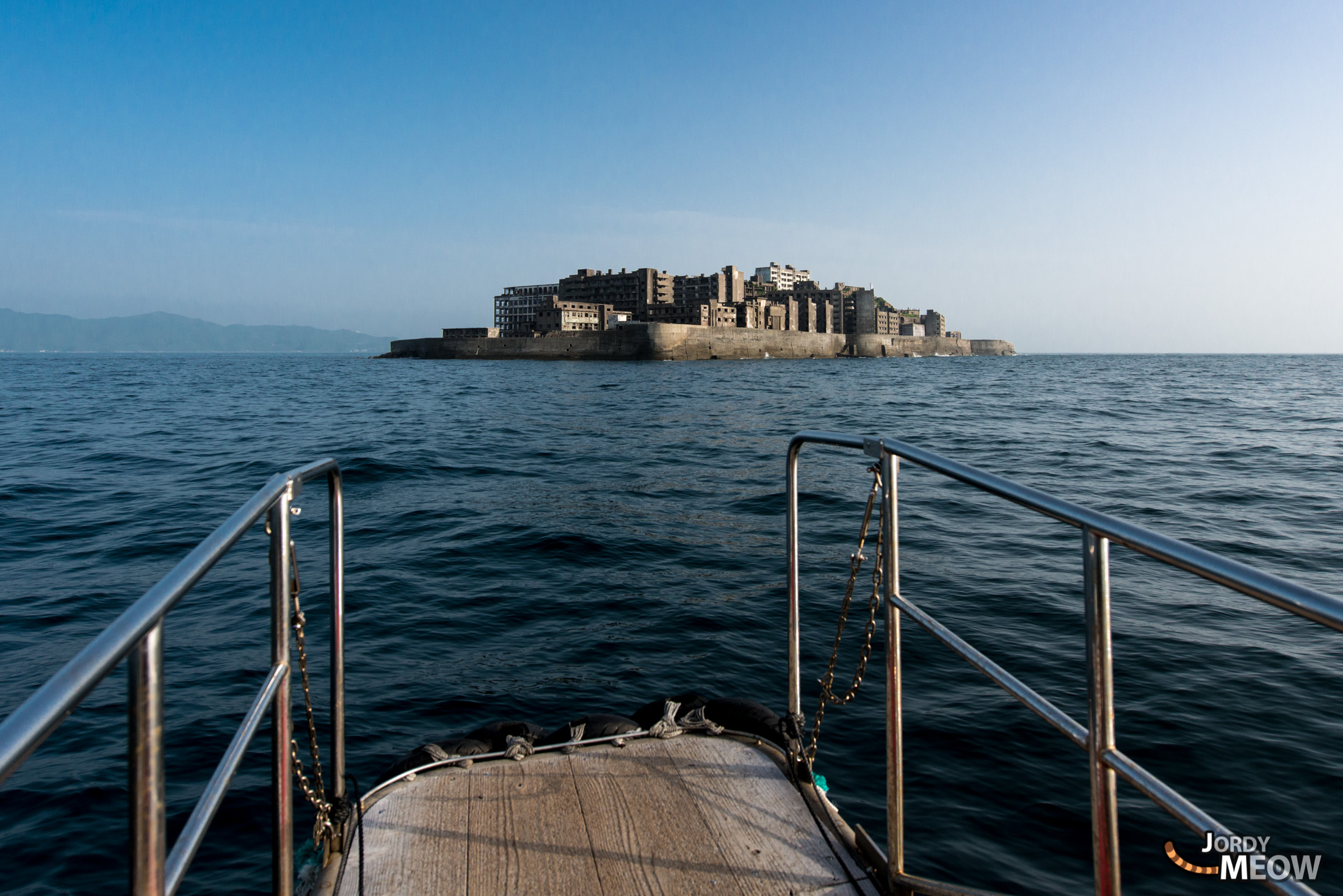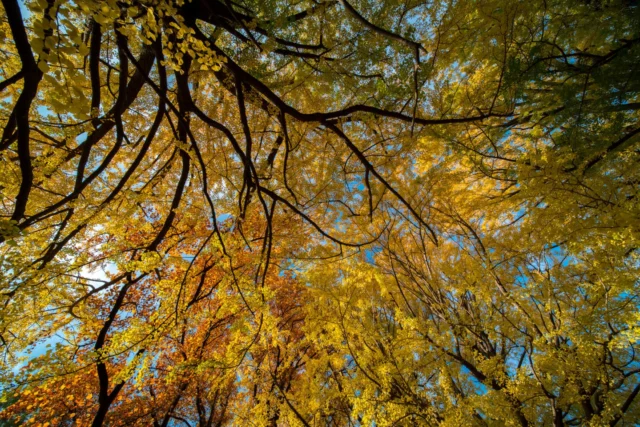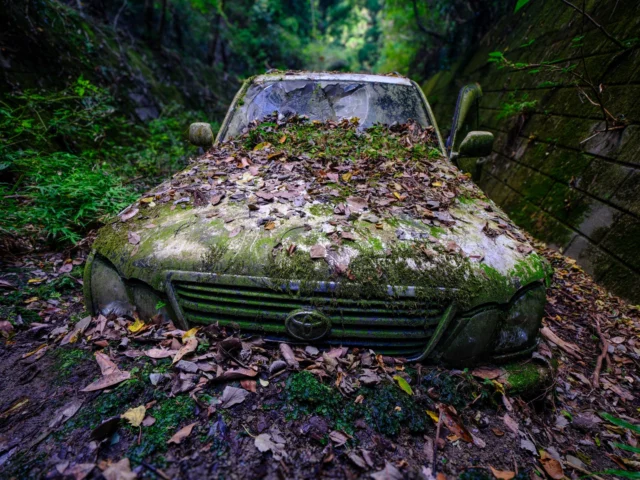Cape Soya Hills (宗谷丘陵), at the northernmost tip of the Japanese archipelago, is a periglacial landform: a geographical type characterized by gently undulating terrain. The altitude of the valleys varies between 20 and 400 metres.

The cape and the hills of Soya
Formed by repeated freezing and thawing of the ground, the terrain took its present form 20,000 years ago, at the end of the Ice Age. The hills, once covered in dense forest, were ravaged by a series of wildfires in the middle of the Meiji era (1868–1912) and no trace of the trees remains.
The unusual landform was designated as a Hokkaido Heritage site in 2004. Today, Wakkanai’s Soya Hills are popular for offering visitors an exotic ambiance with landscapes resembling Iceland or Siberia.

Cape Soya Farm is home to over 2,800 Soya Black Cattle that graze quietly in the hills. The powerful winds of Wakkanai are used all year round to generate electricity from 57 wind turbines.

Visitors to the region come to enjoy the scenic beauty, but the newest and greatest attraction is the white walking trail through the hills.
White Path「最北の白い道」

Covered in crushed scallop shells, these 3 kilometres of winding trail are known as the “white path” in relation to its dazzling contrast with the verdant landscape.

The route was laid in 2011. Asphalt was soon discarded by the municipality for a material that blends in with the surrounding landscape: scallops, a Wakkanai speciality.
In any case, the recycling of shells that had seemed to be a problem for the little town killed two birds with one stone! The empty shells are crushed and used for paving, as is customary in some rural parts of Scotland and New Zealand.

This immaculate walking trail, built from scratch by the locals, has quickly become the must-see attraction of Soya Hills.
And for more awesome content about Japan, follow Jordy Meow on Instagram ! 🎵



